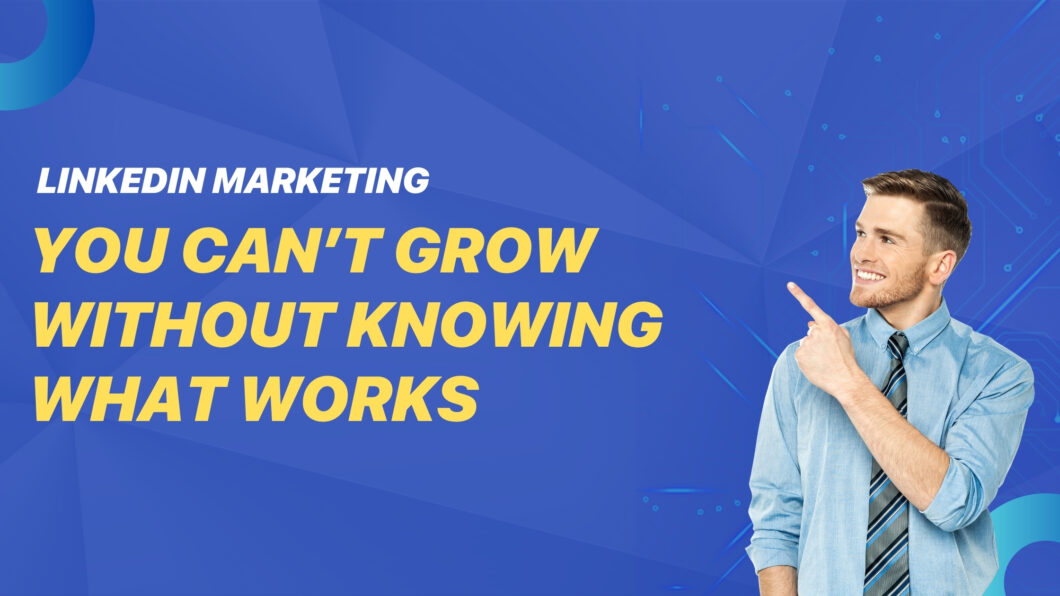Table of Contents
Key Takeaways
1. Use Shield App to track your growth on LinkedIn
2. Understand the connection value of your LinkedIn profile
3. You can borrow audience from your competitors on LinkedIn
4. Quality is product of quantity. Create a lot of content for your LinkedIn profile to figure out what works & then double down on that
Building Meaningful Connections on LinkedIn
A common challenge is developing a network that’s both relevant and engaged. If you’re just starting out on LinkedIn, the most common mistake you will knowingly or unknowingly make is adding irrelevant connections.
If you happen to spend any time-consuming content from LinkedIn growth experts, you must have seen them advising adding more people to grow on the B2B marketing platform. This advice is both right and wrong depending on the context.
The thing that you should focus on is adding only relevant connections who are most likely to engage with your content. If you’re not into content creation, yet, add only those creators whose content you’re most likely to engage.
LinkedIn is a recruiting platform, even if you’re a job seeker, add only those who you can learn from or want to get in front of. Optimizing your LinkedIn profile to stand out from other job applicants along with creating relevant content will help in the long run.
However, this post isn’t about finding jobs. It’s about growing your profile so that recruiters find you.
The biggest problem stopping growth on LinkedIn
The fundamental problem with growing on LinkedIn is poor engagement. The reason why you have poor engagement right now is either your content isn’t good enough or the people who see the content don’t find it relevant.
We have covered the second problem already in the previous section, let’s fix the poor content problem.
#1 Identify connection value
When you invite someone to join your network, go through their profile and figure out, what type of content they would engage with.
Visit any LinkedIn profile and click on “Show all posts”
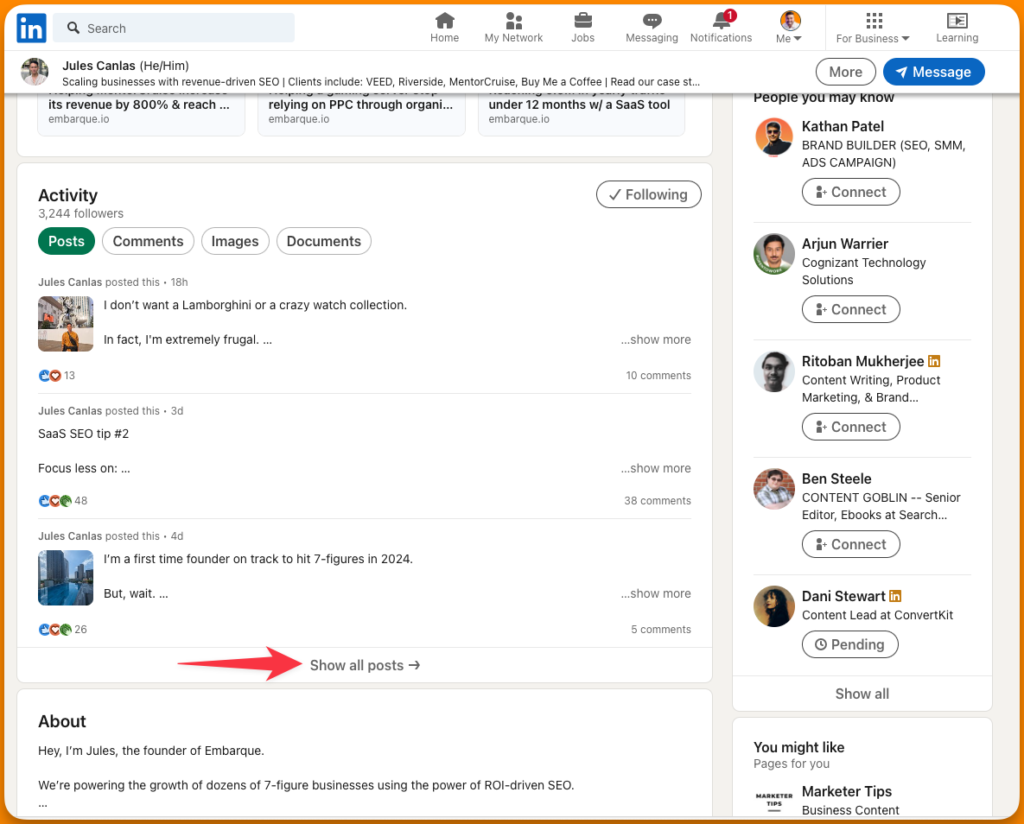
Then browse through comments and reactions as shown below. This will give you enough insights into what type of content they engage with.
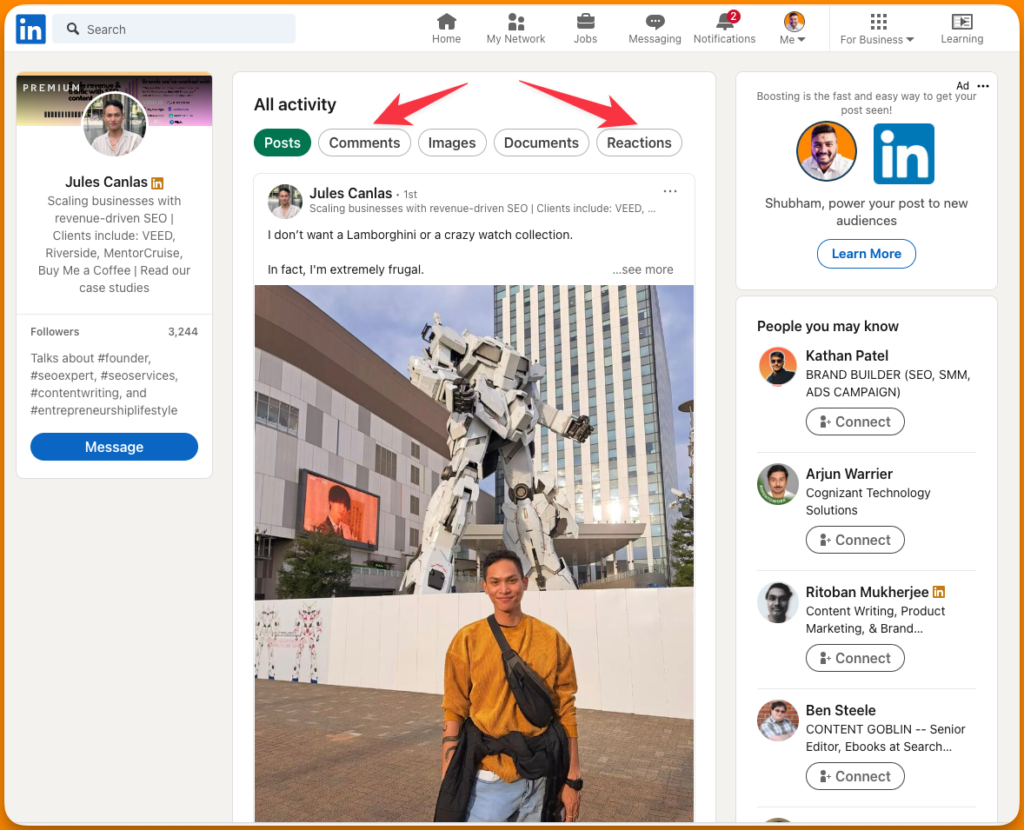
#2 Quality over quantity
Less than 1% of LinkedIn users are creating weekly content on the platform. In terms of organic reach, the LinkedIn algorithm is far from saturated. Good quality content, consistently created will be rewarded with mind-blowing reach.
Create content with a clear CTA in mind. Based on your observations of the profile you’re connected with, identify what’s one thing you want the reader to do. Write every single sentence that inclines toward that CTA. That’s what quality content looks like.
If you’re just starting out, create a ton of content to see what’s working for your audience. There’s no one size fits all so create everything that crosses your mind.
Track the performance of all the created content and decide what to double down on. Quality is a product of quantity. Don’t let anyone let you believe otherwise.
Furthermore, consistently doesn’t mean daily. Block time to create content for LinkedIn and engage with the content created by others. Commenting is an underrated strategy to grow on LinkedIn.
Why growing on LinkedIn important, yet difficult?
Doesn’t matter if you’re looking for a job or business on LinkedIn, always begin by optimizing your LinkedIn profile for success.
Imagine landing your dream client or dream job on LinkedIn. The problem with this is that while growing your network, inexperienced users ignore building relationships.
Here are some challenges you will face while growing on LinkedIn.
#1 Difficulty in Understanding Audience Engagement
Many users find it challenging to accurately gauge what type of content resonates with their audience on platforms like LinkedIn. This difficulty arises due to several factors:
- Varying Interests: LinkedIn audiences often have diverse interests and professional backgrounds, making it hard to create content that appeals to everyone.
- Engagement Metrics: While likes, comments, and shares provide some insight, they don’t always paint the full picture of audience engagement. A post may receive many views but few interactions, making it difficult to assess its true impact.
- Content Saturation: With the high volume of content being posted, it can be challenging for users to determine whether their content is not resonating or simply getting lost in the noise.
- Feedback Loop: There’s often a lack of direct feedback or detailed engagement analytics that can guide content creators on what works best for their specific audience.
#2 Inability to Track Progress Over Time
Tracking growth and engagement trends over time on LinkedIn can be a significant challenge due to the following reasons:
- Limited Historical Data: LinkedIn provides limited access to historical engagement data, making it difficult to analyze long-term trends.
- Inconsistent Metrics: Fluctuations in how LinkedIn measures and reports engagement can lead to inconsistencies in data, hindering accurate trend analysis.
- No Comparative Analysis: The platform lacks features for comparing performance over different periods or against similar content, which can be vital for understanding growth.
- Impact of Algorithm Changes: Frequent changes in LinkedIn’s algorithm can affect the visibility and reach of content, complicating efforts to track consistent growth patterns.
#3 Limited Insights from Basic Analytics
LinkedIn’s native analytics tools, while useful, have limitations in offering detailed insights:
- Surface-Level Metrics: Basic analytics primarily focus on surface-level metrics like views, likes, and shares. They lack deeper insights such as audience demographics, content interaction depth, or conversion tracking.
- Lack of Customization: There is little scope for customizing analytics reports to focus on specific KPIs or audience segments.
- No Content Performance Breakdown: Users can’t easily determine which aspects of their content (format, topic, posting time) are driving engagement.
- Absence of Predictive Analytics: LinkedIn analytics does not provide predictive insights or recommendations based on past performance, which could guide future content strategies.
These challenges underscore the need for a more sophisticated approach to content strategy on LinkedIn, including potentially leveraging third-party tools or analytics platforms to gain deeper insights into audience engagement and content performance.
To tackle these problems, I have a simple 5 step framework that I have applied to my growth on LinkedIn. Let’s explore that.
5 Ways to Grow on LinkedIn, Fast
I’ve named this framework ‘Romebee’, (as in Rome. Like Rome wasn’t built in one day, your growth on LinkedIn will also take time. And Bee, inspired by the Bee community, and how they work together)
Let’s explore the details of the framework that has helped me to grow my career using LinkedIn.
#1 Reach your competitor’s audience
LinkedIn is a gold mine if you know what to look for. There’s no need to have a premium account, it’s just that you should know how to utilize what you have.
You can search for 100 people per month, that’s enough for you to grow. However, that limit will slow down your growth. If you want to speed up, I’d highly recommend investing in LinkedIn Premium. It’s totally worth it.
Even if you use the premium features to grow your network, the ROI will pay for the LinkedIn Premium within the first year.
Here’s how you can get in front of your competitor’s audience.
#1 Go to LinkedIn search and type the profession you want to target. In my case, I’ll use “Founder”
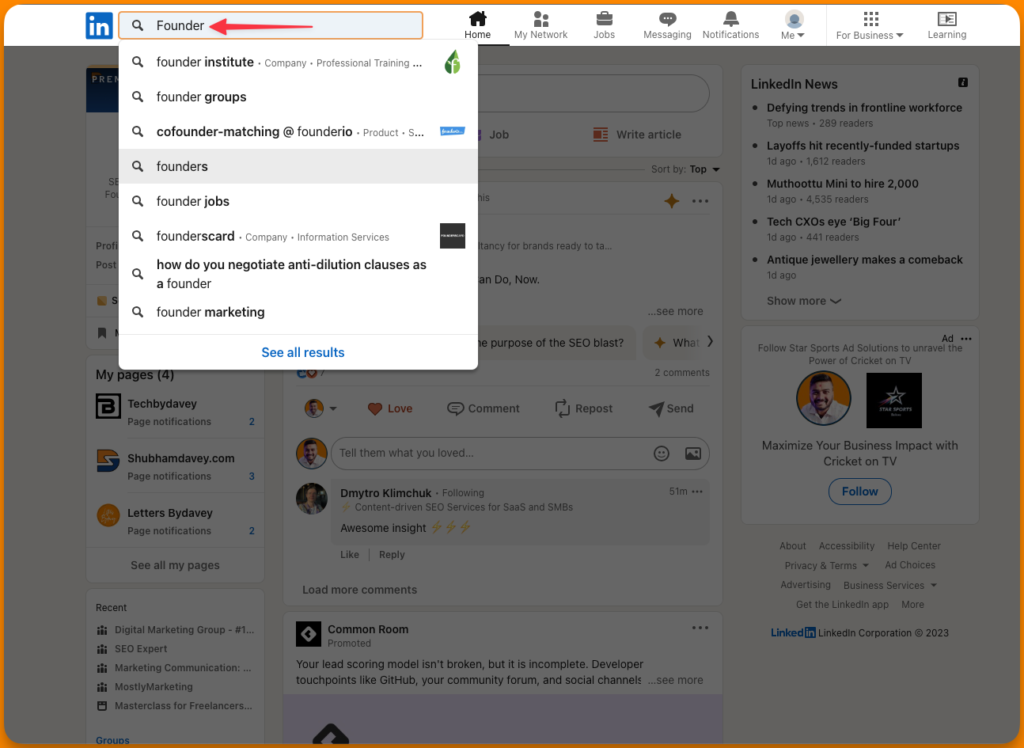
#2 Click on “All Filters” and then enter the competitor’s name in “Connections of” or “Followers of”. Remember, you can use this method only for people. If you’re planning to reach in front of corporate brands, this won’t work. If you filter by companies, the fields of the filter will change.
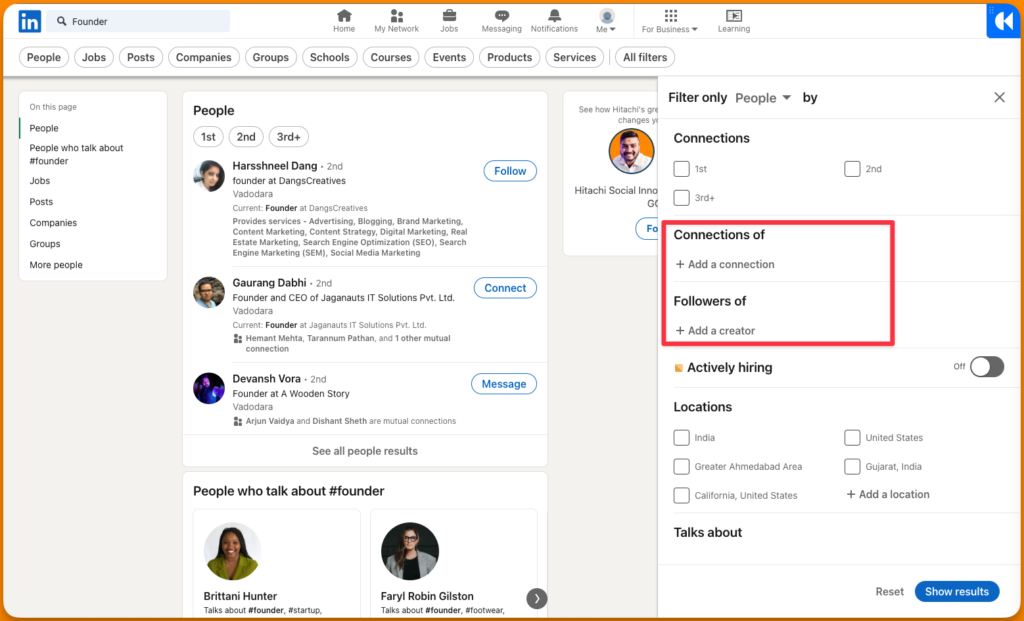
This way you will have access to followers of your competitors, especially if you’re competing against a personal brand. Stealing is the wrong word. This isn’t stealing, this is borrowing.
This way you can directly find people who are already engaging with your competitor. You can ensure you’re connecting with the right kind of people. At present, there’s no legit & safe way to get a list of followers of a company page.
Before you get in front of the list of people you borrowed from your competitors, make sure your profile is ready to convert traffic. The most important element of getting visitors to take action is to define your services.
Let’s see how.
#2 Mention your services
If you don’t know already, LinkedIn has a services marketplace where you can list your services and get clients who are searching for service providers like you.
To set up your services on LinkedIn:
#1 Go to the LinkedIn homepage and click on the menu icon in the top right
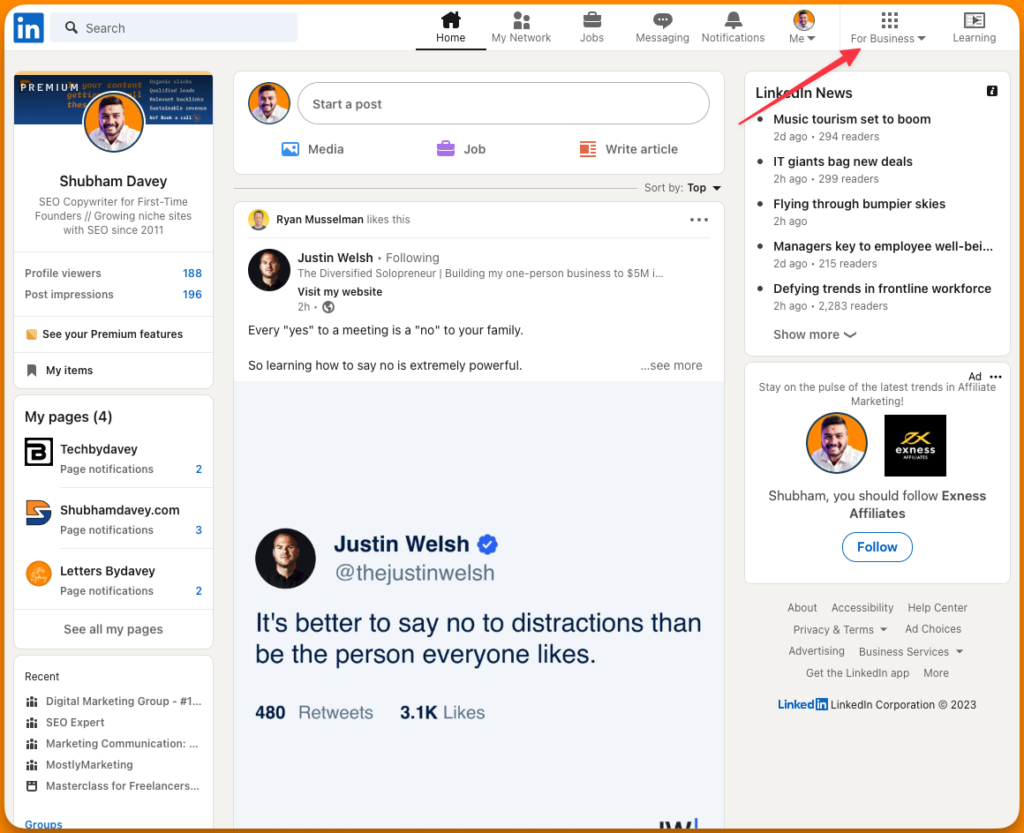
#2 Then click on “Services Marketplace”. If you can’t find it in the menu, click here to directly navigate to the Services Marketplace.
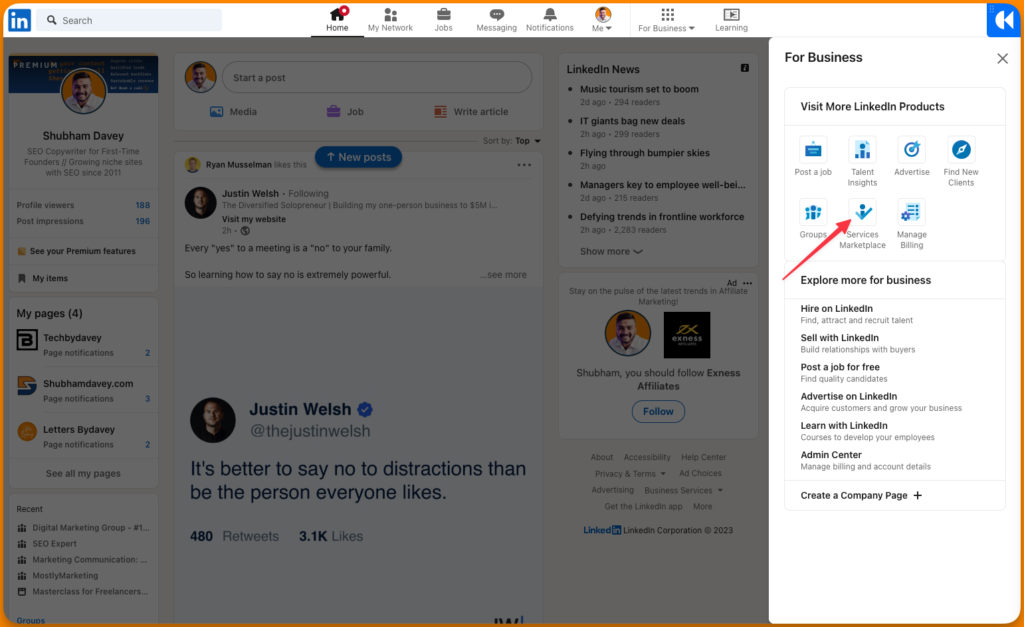
#3 Get started with creating a free services page on LinkedIn. You can learn more about the service pages on LinkedIn here.
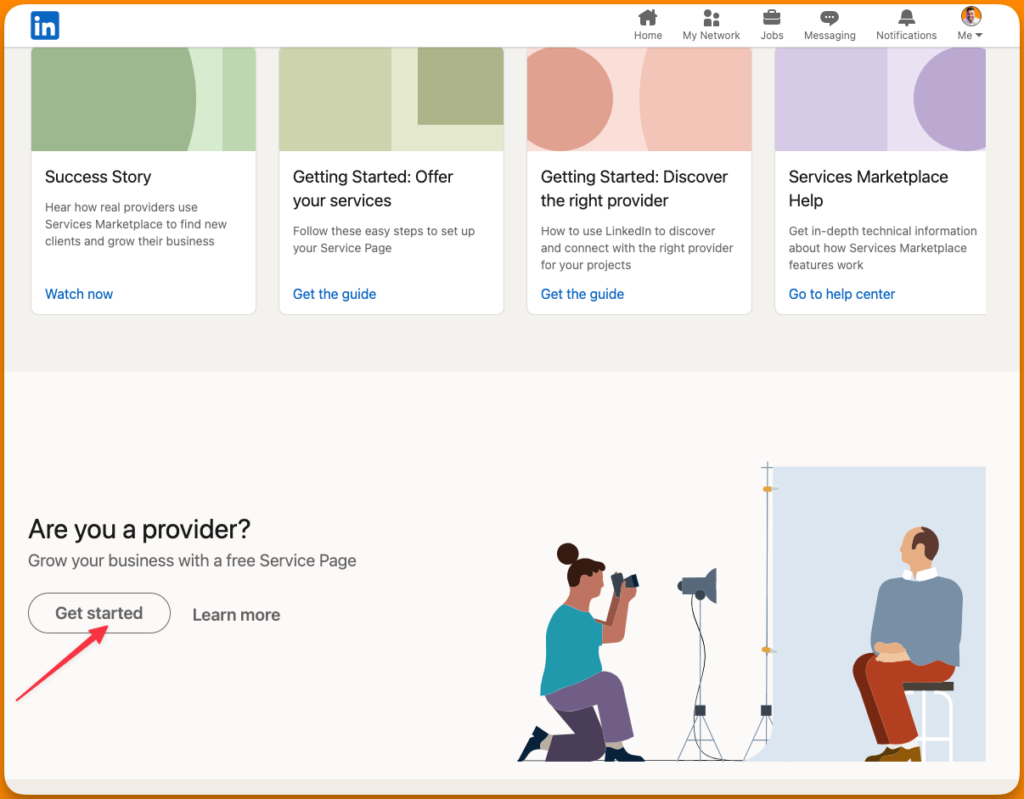
#4 Setup profile based on your skills
I have my profile set up and these are the details I have added to my service page. But if you’ve never created a service page on LinkedIn, the below-mentioned fields would be empty.
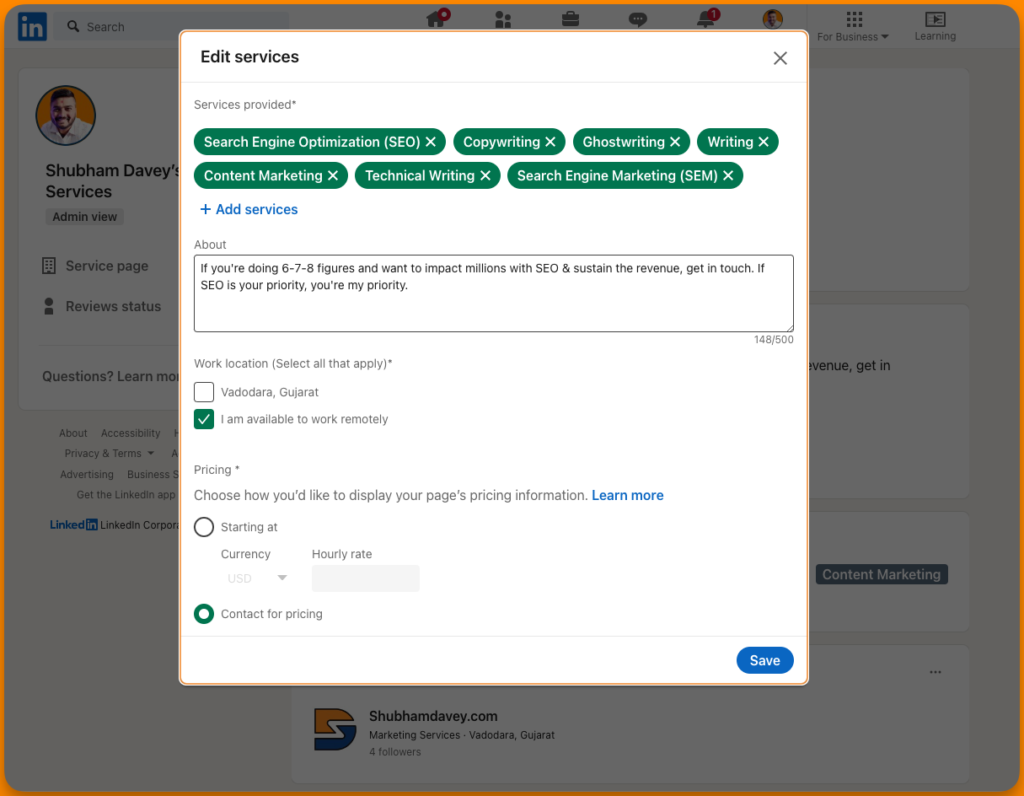
Once filled, LinkedIn search offers a filter where users can find people providing specific services as shown below.
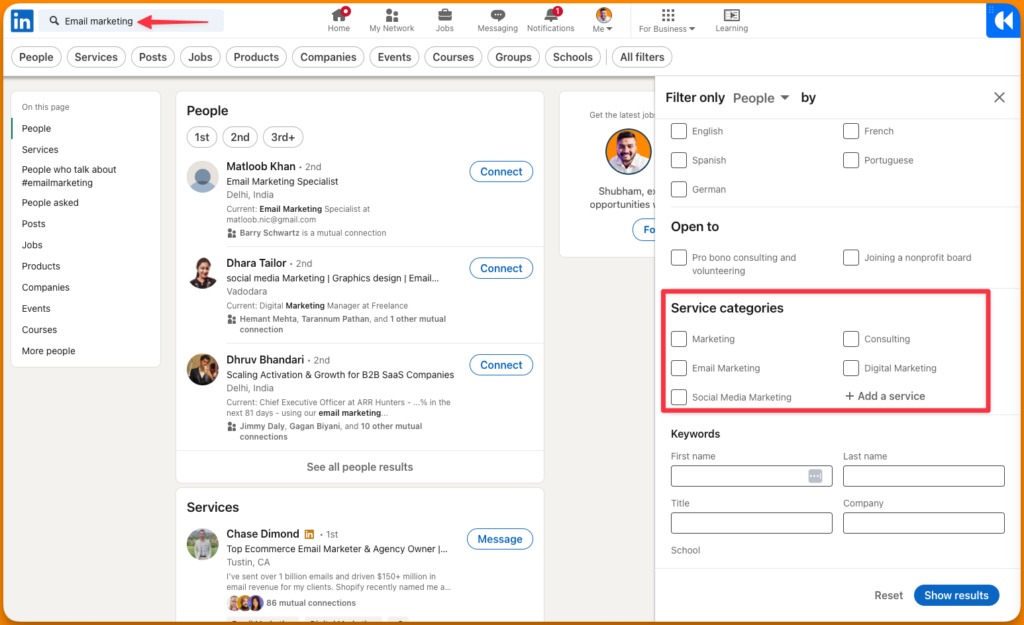
When someone searches for services you provide, based on how optimized your profile is, you will rank higher in the search. The higher you rank, the more people approach you, and the more clients you close.
But all this will hold true only if you have an optimized profile. Let’s see how you can optimize your LinkedIn profile.
#3 Optimize your profile
Every social platform is becoming a search engine. People constantly search for opportunities in the form of people, jobs, content, and more.
It’s very important to be “seen” on a platform that has nearly a billion professional people.
Here are a few most important things you should focus on while optimizing your LinkedIn profile:
#1 Update your headline
LinkedIn, unlike any other social platform, shows headlines of the profile everywhere on the platform. This can be your elevator pitch element. When you comment, people will see your headline. I recently found the best use of the headlines feature on LinkedIn.
One of my favorite LinkedIn creators, Jasmin Alić published a post about coming up with 365 content ideas for LinkedIn. He literally replaced his headline announcing this post.
Those who haven’t seen his post, will now visit his profile and look for that post. Brilliant! Considering the stature he has attained, I won’t be surprised to know if he had a flood of traffic on his LinkedIn profile.
Absolute genius.
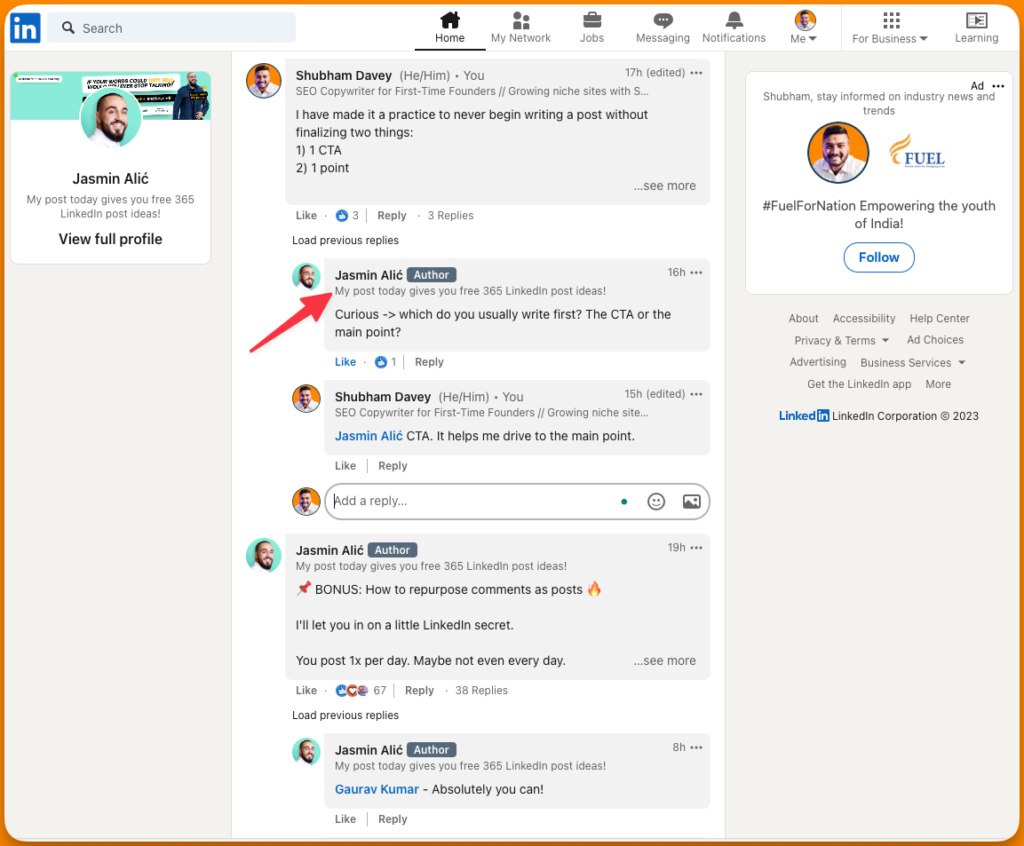
#2 Update your display & cover picture
Updating the display and cover pictures is fundamental to LinkedIn profile optimization. Imagine, would you accept a friend request from someone without a profile picture on Facebook? I bet you wouldn’t.
Having an age-old photo will ruin the chances of establishing trust on the professional platform. Seek professional help to get a decent headshot of you to be used as a display picture.
A cover photo can trigger the profile visitors to take action. What do you want the visitors to do once they land on your LinkedIn profile? Showcase that clearly in your cover photo.
P.S. I have documented a full-length blog just to talk about Optimizing your LinkedIn Profile. Find all the steps to transform your LinkedIn profile into a lead-magnet.
#4 Build your network
According to Statista, LinkedIn has nearly 900 million users & 1.8 billion visitors as of April’23. That’s a lot to build a dedicated following on the platform. Especially if your audience is professional and career-inclined.
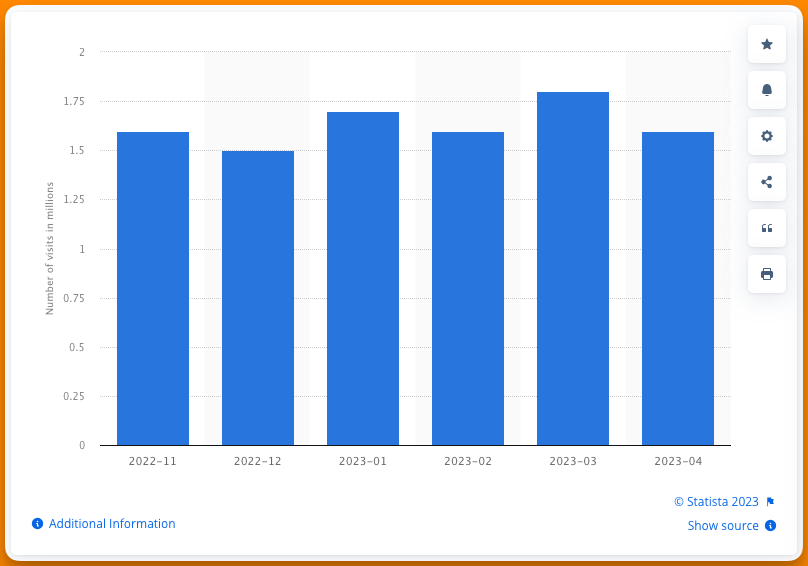
Networking isn’t as easy as sending a friend request on Facebook. It’s more than simply adding people to your network. It means people get to know you personally, little by little.
The whole point of networking is to build an inner circle of people who engage with your content whenever you publish. This doesn’t mean you’d selfishly connect with people only to get them to engage with your content.
But to build a genuine connection after which they’d stop scrolling when they see your name in their feed and consume your content. That’s what good friends do.
Networking is confusing & subjective, beware of the most common mistakes one can make while using LinkedIn.
#5 Build a community
Building a community on any platform is fruitful in the long run. You can leverage the audience to build an inner circle of email lists to whom you can directly sell.
A community can be on LinkedIn or off LinkedIn. I’m part of several such communities that are closely knit around certain niches. The founders of such off-LinkedIn communities leverage LinkedIn to engage with like-minded people and promote the community.
One such community I love & actively engage in is Mostly Marketing.
Build a community of your target audience around one niche that all the members of the community really care about. Use that community to fuel your growth.
What’s tracked is bound to grow
LinkedIn is highly fertile right now. Use it for your own benefit and make sure you don’t fall trap to pointless shortcuts that lead to nowhere. Always look for what working & keep track of your growth.
Using analytics tools can help with growing on LinkedIn. Shield Analytics is one such tool that can help you understand what works, improve your content, and make a bigger impact.
It’s not just about posting good stuff but also about knowing your audience and adjusting your strategy. With the right analytics, you can take your LinkedIn game to the next level and reach your goals.

